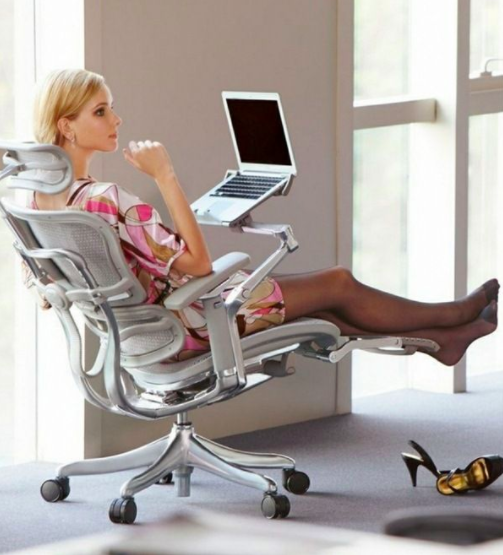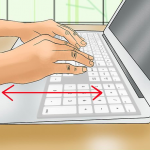If you are forced to sit in a chair for a long time, this can be extremely detrimental, especially if you already suffer from health problems.
If you suffer from a bad back, fibromyalgia, poor circulation or other musculo-skeletal problems, it is vital you choose a chair that will be comfortable and help prevent discomfort and attenuation of your health problems.
There are many types of chairs available and it is important you choose the one that best prevents discomfort particular to your health problems.
1. Height: Choose an ergonomic chair that is easily adjustable. Your feet should be flat on the floor with knees bent at a 90-degree angle. In addition, your thighs should be parallel to the floor and your arms must be level with the desk.
2. Width: The seat of the chair should be wide enough to be comfortable. Your thighs should not be pressed up against the arms of the chair.
Your back should be against the backrest of the chair and the front edge of the chair should not be pressing against the back of your knees. You should be able to adjust the tilt of the backrest.
3. Back support: Your chair should provide support for your lower back. Without this lower back support you will slouch and this will cause pressure on your lower back resulting in lower back pain. Your chair should offer lower (lumbar) support to prevent this back strain.
4. Back Rest: You want the back of your chair to be at least 12-19 inches wide. In addition, if the backrest is separated from the chair seat, it should be adjustable. You want the backrest to support the curve of your spine, especially the lower portion. If the seat and back of the chair is one unit, you still should be able to adjust the angle and support of the backrest.
5. Material: You want the ergonomic chair to be appropriately padded so that it provides sufficient comfort. The seat should be soft as opposed to hard, especially if you plan to sit for long periods at a time.
6. Arms: Make sure the armrests are adjustable on your chair. You want your arms and shoulders to be relaxed with your elbows at a 90-degree angle to the desk. Your arms should rest lightly on the armrests when you use your keyboard.
7. Turning: If your job function involves a lot of reaching and turning, you want an ergonomic chair that swivels easily. Without the swivel you will strain your back, abdomen and arms reaching for objects and materials.



